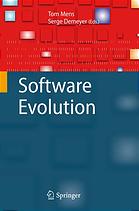

Most ebook files are in PDF format, so you can easily read them using various software such as Foxit Reader or directly on the Google Chrome browser.
Some ebook files are released by publishers in other formats such as .awz, .mobi, .epub, .fb2, etc. You may need to install specific software to read these formats on mobile/PC, such as Calibre.
Please read the tutorial at this link: https://ebookbell.com/faq
We offer FREE conversion to the popular formats you request; however, this may take some time. Therefore, right after payment, please email us, and we will try to provide the service as quickly as possible.
For some exceptional file formats or broken links (if any), please refrain from opening any disputes. Instead, email us first, and we will try to assist within a maximum of 6 hours.
EbookBell Team

4.0
76 reviewsSoftware has become omnipresent and vital in our information-based society, so all software producers should assume responsibility for its reliability. While "reliable" originally assumed implementations that were effective and mainly error-free, additional issues like adaptability and maintainability have gained equal importance recently. For example, the 2004 ACM/IEEE Software Engineering Curriculum Guidelines list software evolution as one of ten key areas of software engineering education.
Mens and Demeyer, both international authorities in the field of software evolution, together with the invited contributors, focus on novel trends in software evolution research and its relations with other emerging disciplines such as model-driven software engineering, service-oriented software development, and aspect-oriented software development. They do not restrict themselves to the evolution of source code but also address the evolution of other, equally important software artifacts such as databases and database schemas, design models, software architectures, and process management. The contributing authors provide broad overviews of related work, and they also contribute to a comprehensive glossary, a list of acronyms, and a list of books, journals, websites, standards and conferences that together represent the community’s body of knowledge.
Combining all these features, this book is the indispensable source for researchers and professionals looking for an introduction and comprehensive overview of the state of the art. In addition, it is an ideal basis for an advanced course on software evolution.